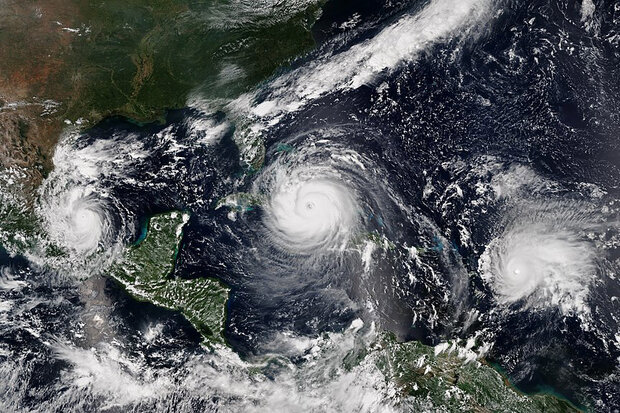Scientists discover Atlantic Niño fuels the most intense and destructive tropical cyclones

Three Atlantic hurricanes, Katia, Irma, and Jose, simultaneously churn on September 8, 2017. Credit: NOAA

Three Atlantic hurricanes, Katia, Irma, and Jose, simultaneously churn on September 8, 2017. Credit: NOAA
Scientists at NOAA’s Atlantic Oceanographic and Meteorological Laboratory (AOML) found that Atlantic Niño, the Atlantic counterpart of the Pacific El Niño, increases the formation of tropical cyclones off the coast of West Africa, also known as Cape (Cabo) Verde hurricanes. The study published in Nature Communications is the first to investigate the links between Atlantic Niño/Niña and seasonal Atlantic tropical cyclone activity and the associated physical mechanisms.
Cape (Cabo) Verde hurricanes are Atlantic basin tropical cyclones that develop into tropical storms fairly close (<600 miles or so) to the Cape Verde Islands and then become hurricanes before reaching the Caribbean. The Cape Verde region produces some of the Atlantic’s longest lasting, most intense and destructive hurricanes due to having plenty of warm open ocean over which to develop before encountering land or other factors prompting weakening. Tropical cyclones that develop here make up more than half of the named tropical systems that annually form and account for more than 80-85% of all major hurricanes (Category-3 and above) that strike the United States and Caribbean islands.